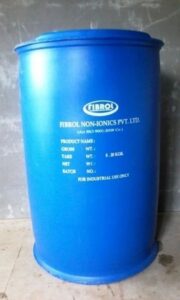Oleic Acid Ethoxylates: Product Description and Uses
Product Description
Oleic Acid Ethoxylates are non-ionic surfactants derived from oleic acid, a naturally occurring fatty acid found in various animal and vegetable fats. These ethoxylates are produced by the reaction of oleic acid with ethylene oxide, resulting in a compound that exhibits excellent emulsifying, wetting, and dispersing properties. Oleic Acid Ethoxylates are characterized by their ability to lower surface tension, making them effective in a variety of applications across different industries.
Uses
Oleic Acid Ethoxylates are versatile compounds with a wide range of applications, including:
- Personal Care Products: Used as emulsifiers and solubilizers in creams, lotions, and shampoos.
- Household Cleaning Products: Acts as a surfactant in detergents and surface cleaners, enhancing cleaning efficiency.
- Industrial Applications: Utilized in textile processing, paint formulations, and as dispersants in agricultural products.
- Food Industry: Employed as emulsifiers in food products, ensuring uniform distribution of ingredients.
- Pharmaceuticals: Used in drug formulations to improve solubility and bioavailability of active ingredients.
Technical Data
| Property | Value |
|---|---|
| Chemical Name | Oleic Acid Ethoxylate |
| CAS Number | 9002-92-0 |
| Appearance | Clear to pale yellow liquid |
| HLB (Hydrophilic-Lipophilic Balance) | 12-15 |
| pH (1% solution) | 5.0 – 7.0 |
| Solubility | Soluble in water and organic solvents |
| Molecular Weight | Varies with ethylene oxide content |
| Flash Point | > 100 °C |
| Density | 0.9 – 1.0 g/cm³ |
| Viscosity | Low viscosity |
Key Benefits
- Biodegradable: Oleic Acid Ethoxylates are environmentally friendly and break down naturally.
- Mildness: They are gentle on skin, making them suitable for personal care applications.
- Versatility: Their ability to function in various pH levels and temperatures makes them adaptable for multiple uses.
In summary, Oleic Acid Ethoxylates are valuable surfactants with a broad spectrum of applications, making them essential in personal care, cleaning, industrial, food, and pharmaceutical sectors. Their favorable properties and benefits contribute to their widespread use in formulations across these industries.

